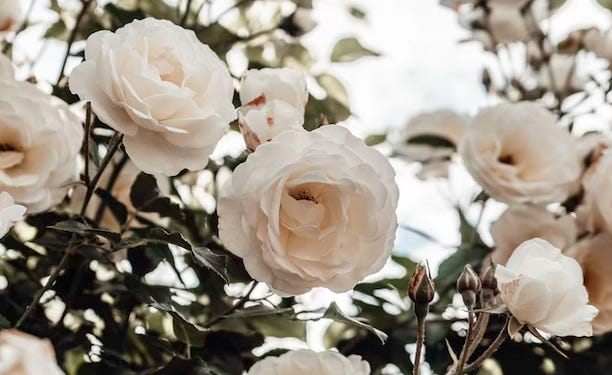Learn More About the Specific Plants That Are Negatively Influenced by Epsom Salt Application
Epsom salt, a prominent house remedy for various horticulture concerns, is usually praised for its useful results on plant development. Not all plants respond favorably to its application. Understanding the particular plants that can be negatively influenced by Epsom salt is crucial for any gardener seeking to maximize their plant treatment regimen. Roses, tomatoes, rhododendrons, azaleas, and peppers are simply a couple of instances of plants that might not react well to Epsom salt. The factors behind these damaging results and just how to mitigate them are vital understanding for preserving a prospering yard.
Roses

Roses, particularly conscious modifications in their atmosphere, can be negatively influenced by the application of Epsom salt. While Epsom salt is commonly utilized as a fertilizer to promote plant development and improve flowering, roses are just one of the plants that do not react well to its application. The high magnesium content in Epsom salt can hinder the uptake of other important nutrients by the rose plants, bring about shortages that materialize as yellowing leaves or stunted development.

Tomatoes
While Epsom salt is often proclaimed as a remedy for various plant concerns, consisting of blossom end rot in tomatoes, its application can lead to harmful outcomes if not made use of deliberately. Too much Epsom salt, which is magnesium sulfate, can interfere with the fragile nutrient equilibrium needed by tomatoes, potentially leading to deficiencies in various other essential nutrients like calcium. When thinking about the use of Epsom salt on tomatoes, it is crucial to stick to suggested application rates and dirt screening to stop unintentional consequences on the overall wellness and performance of these beloved yard plants.
Peppers
Peppers, admired for their various shades and levels of spiciness, can demonstrate susceptibility to adverse effects from Epsom salt when not applied with care and factor to consider for their certain dietary needs. what plants don't like epsom salt. Peppers, coming from the Solanaceae household, call for a delicate equilibrium of nutrients to grow. While Epsom salt is understood to enhance magnesium degrees in plants, extreme application can interrupt this stability, bring about adverse impacts on pepper plants
When peppers are revealed to high levels of magnesium from Epsom salt, it can interfere with the plant's ability to take in other crucial nutrients like calcium and potassium. This discrepancy might show up in signs and symptoms such as leaf staining, stunted development, and decreased fruit manufacturing. Additionally, the too much magnesium can alter the dirt pH, more aggravating nutrient uptake issues for peppers.

Rhododendrons
Offered the level of sensitivity of particular plant varieties to imbalances triggered by Epsom salt, it is vital to consider the effect on Rhododendrons, which likewise need certain nutrient degrees to prosper. Rhododendrons are acid-loving plants that favor acidic soil problems with a pH variety in between 4.5 and 6.0. Epsom click here now salt, chemically understood as magnesium sulfate, can change the soil pH and interfere with the delicate balance of nutrients important for Rhododendron health and wellness.

To keep the optimum growth and wellness of Rhododendrons, it is important to avoid the unplanned use Epsom salt and rather focus on providing the details acidic dirt conditions and nutrients that these plants need for prospering.
Azaleas
These prominent flowering plants are commonly found in parks, gardens, and landscapes due to their appeal and flexibility. While Epsom salt is generally used as a solution for magnesium deficiency in plants, its application to azaleas can have negative results.
When Epsom salt is related to azaleas, it can modify the dirt pH, making it much more acidic. Azaleas favor slightly acidic soil problems, and an unwanted of magnesium from Epsom salt can disrupt this equilibrium, bring about nutrient imbalances and prospective poisoning issues. The incorrect application of Epsom see post salt can cause stunted growth, yellowing of leaves, and general decrease in the health of azaleas. For that reason, it is critical to be cautious when thinking about using Epsom salt on azaleas to protect against any unfavorable effects on these fragile decorative shrubs.
Conclusion
In verdict, it is very important to be mindful of the specific plants that can be adversely impacted by the application of Epsom salt. Roses, tomatoes, azaleas, peppers, and rhododendrons are some examples of plants that may not take advantage of Epsom salt and can also experience damage. It is essential to study and understand the demands of each plant species prior to using Epsom salt as a plant food to ensure their health and wellness and health.
Understanding the specific plants that can be detrimentally impacted by Epsom salt is crucial for any garden enthusiast looking to maximize their plant treatment routine. While Epsom salt is commonly made use of as a plant food to promote plant growth and improve flowering, roses are one of the plants that do not react well to its blog application.Too much usage of Epsom salt can likewise result in an accumulation of salts in the dirt, leading to root damages and dehydration of the rose plants. While Epsom salt is recognized to boost magnesium levels in plants, excessive application can disrupt this balance, leading to adverse effects on pepper plants.
The high salt content in Epsom salt can likewise dry out Rhododendron origins, causing further tension and damage to the plant. (what plants don't like epsom salt)